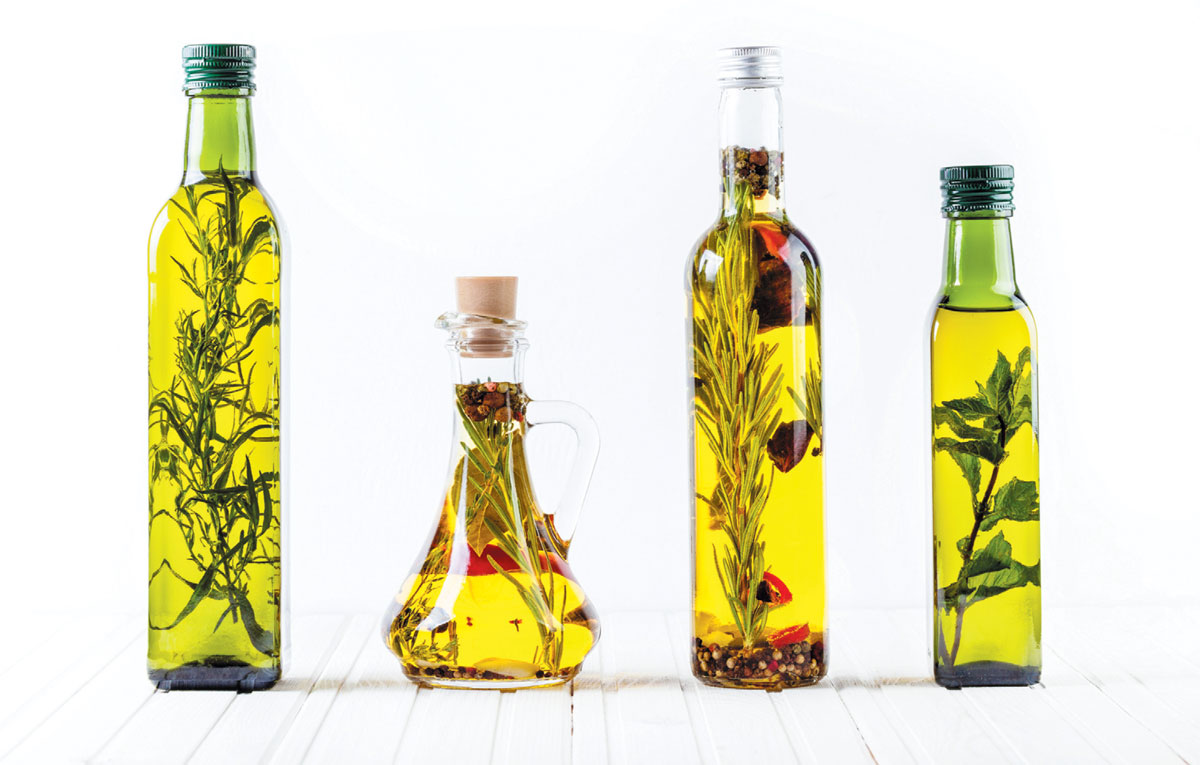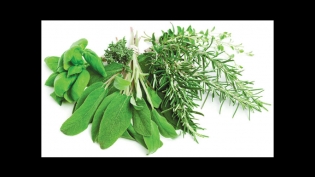Herbal Vinegars & Dressings
Vinegar: derived from the French words for sour wine. Just writing the word makes my mouth water.
One of the oldest foods and medicine known to humankind, vinegar was discovered around the same time of the first reported wine makers. In the centuries before wine production was perfected much of the wine became vinegar. Written medicinal references became commonplace in Babylonia in 5000 B.C. Use quickly spread through Egypt, Greece and then to the rest of the Western world. Until modern technology, vinegar was a major way of preserving food. The acid nature of vinegar slows the growth of harmful bacteria in foods.
The ancient Greeks and Romans had large quantities in their cellars used for cooking, preserving and medicine. Barrels were passed on from generation to generation, often used as part of a wedding dowry. Vinegar was mentioned many times in the Bible; you can find it in the Book of Ruth. Vinegar was drunk as a biblical Gatorade and used by the Roman army, helping soldiers in vigorous battles under the hot sun, and possibly the boudoir. In the Americas during the 18th and 19th centuries, drinks combining fruit juice, water and flavored herbal vinegars came to be known as “shrubs”, or “switch”, used by laborers during harvesting.
Vinegars throughout the ages have been used for medicinal purposes. Early Greek, Roman and Asian doctors used vinegar for aiding digestion, to prevent scurvy and for feminine disorders. In medieval times, grave robbers used “Thieves Vinegar”, a combination of mint, rosemary, sage and raw vinegar, to protect them from the plague. Today, vinegar is scientifically proven to contain many antibacterial and antiseptic properties.
Cleopatra won a wager that she could consume a priceless meal by dissolving pearls in vinegar and drinking the results.
Vinegar was used to cool cannons.
It’s also a foodie and chef favorite staple.
Whether you are Cleopatra, Italian royalty or cooling your own guns, you also can reap not only vinegar’s medicinal properties, but you can make your own culinary herbal vinegars.
Vinegar is a sharp tasting liquid thanks to acetic acid. It is produced from the fermentation of the juice of various grapes, fruits and berries or from honey, molasses, grains or potatoes.
The process of making vinegar begins when fermentation changes the sugar in the liquid into alcohol and carbon gas. The gas evaporates, leaving only the alcohol and flavors, or “esters”. In the final phase, oxidation occurs: oxygen in the air combines with the alcohol and with the help of a group of microscopic organisms known as acetobacters…the result is vinegar. The microscopic organisms, mainly various bacteria, form a gelatinous mass known as the “mother”.
To make vinegar is a slow natural process. It can take several years, depending on temperature, air circulation and container type—crocks, glass, wooden casks or barrels. The alcohol comes into contact gradually with the air, and as it does it changes into acetic acid or vinegar, which is heavier than alcohol and sinks to the bottom of the container. Over time the alcohol rises to the top and turns into vinegar.
Technology has speeded up this process, leaving vinegars crystal clear. Better quality aged wine, cider or malt vinegars are left unfiltered and unpasteurized, in which case the bacteria or mother will form at the top and sometimes sink to the bottom. This can be used to make your own vinegar similar to the way a sourdough starter mother is used.
There are numerous vinegars, from cider vinegar (made with apples), malt vinegar (made with malted barley and grain combined with beech, birch or other wood shavings), distilled vinegars (made from grain), coconut vinegar, rice vinegar, Sherry vinegar, plum, wine, balsamic, cane and champagne, just to a name a few.
You may use any of these vinegars, or a combination, to start your own herbal/flavored vinegar. Homemade herbal vinegars have a fresh intense flavor and are easy to make. Herbal flavored vinegars are one of the best ways to use your garden harvest.
There are no hard and fast rules for making your own flavored vinegars; experiment and vary recipe proportions to suite your own taste. But do keep a notebook for proportions and combination, just in case you blend a future family tradition.
Equipment to have on hand:
Jars and/or bottles. Save your attractive bottles such as syrup, beer or salad dressing bottles. Keep your eye open at yard sales, flea markets and thrift shops.
Bottle brush. Always sterilize bottles or jars and let them dry completely. A trace of water from herbs or the bottle can make vinegar cloudy.
Use non-reactive equipment such as glass, plastic, porcelain, pottery, or enamel-covered steel. If using a Mason jar, place a sheet of plastic wrap over the mouth of the jar before closing with the metal cap and ring.
Use the best vinegar you can afford.







